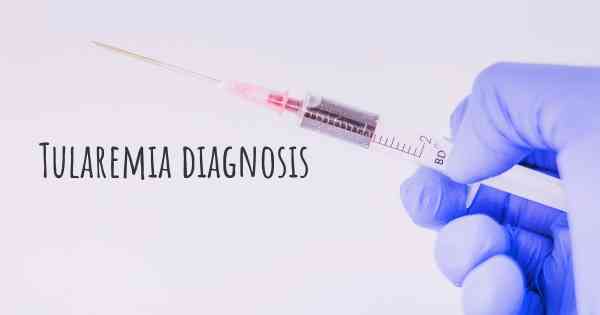How is Tularemia diagnosed?
See how Tularemia is diagnosed. Which specialists are essential to meet, what tests are needed and other useful information for the diagnosis of Tularemia

Tularemia is a rare infectious disease caused by the bacterium Francisella tularensis. It can affect various organs in the body and is typically transmitted to humans through contact with infected animals, insect bites, or exposure to contaminated water or soil.
Diagnosing tularemia can be challenging due to its nonspecific symptoms that resemble other illnesses. However, early detection is crucial for effective treatment. Healthcare providers use a combination of clinical evaluation, laboratory tests, and patient history to diagnose tularemia.
Clinical evaluation: The healthcare provider will assess the patient's symptoms, medical history, and potential exposure to tularemia. Common symptoms include sudden fever, chills, headache, muscle aches, fatigue, and swollen lymph nodes. The presence of these symptoms, along with a history of possible exposure, raises suspicion for tularemia.
Laboratory tests: Several laboratory tests are used to confirm the diagnosis of tularemia. These include:
- Blood tests: A blood sample is taken to check for the presence of antibodies against Francisella tularensis. The body produces these antibodies as a response to the infection. Blood tests can also help assess organ function and detect any abnormalities.
- Microscopic examination: If there is a skin ulcer or swollen lymph node, a sample may be collected and examined under a microscope. This can reveal the presence of the bacteria or any characteristic changes in the tissue.
- Culture: Culturing the bacteria from a clinical sample, such as blood, sputum, or tissue, can definitively confirm the diagnosis of tularemia. However, this method takes time and requires specialized laboratory facilities.
- PCR (Polymerase Chain Reaction): PCR is a molecular technique used to detect the genetic material of the bacteria. It is a rapid and sensitive method that can identify the presence of Francisella tularensis DNA in clinical samples.
Other diagnostic considerations: In some cases, imaging tests such as chest X-rays or CT scans may be performed to evaluate the extent of organ involvement or rule out other conditions with similar symptoms.
It is important to note that tularemia is a rare disease, and healthcare providers should consider it in the differential diagnosis when patients present with compatible symptoms and a history of potential exposure. Prompt diagnosis and appropriate treatment are essential to prevent complications and promote recovery.








